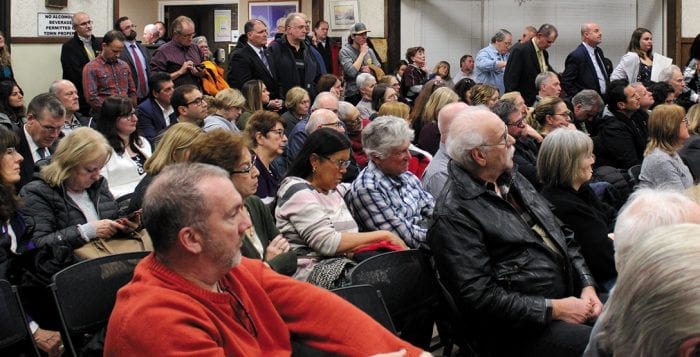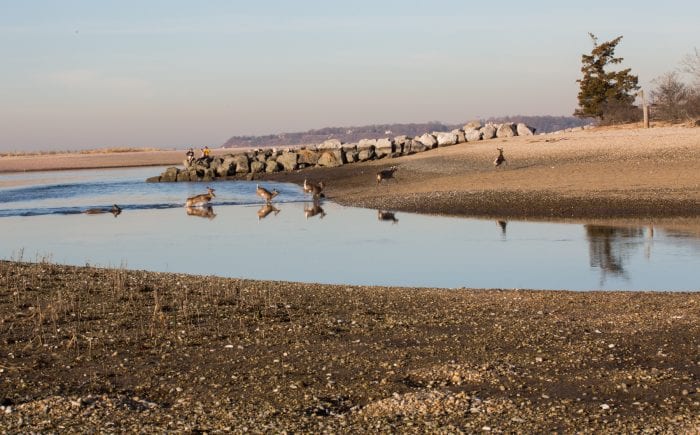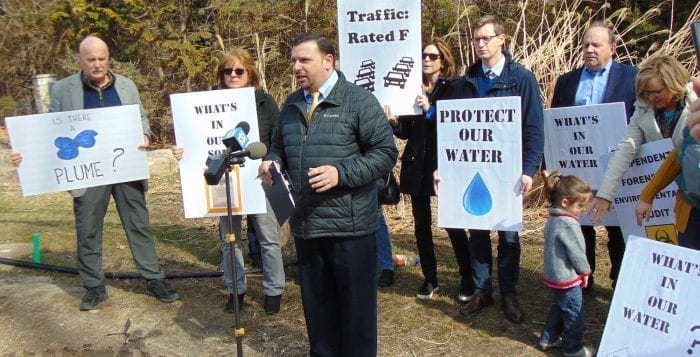While plans are not set in stone, Gyrodyne in St. James now has some guidance regarding its proposed sewage treatment plant after a recent meeting of the Suffolk County Sewer Agency.
During a June 22 Zoom meeting, the agency members unanimously granted Gyrodyne what is known as conceptual certification for the plant, explaining that certification gives the applicant guidance regarding the type of wastewater disposal methods but is not an official approval.
Currently, the Town of Smithtown is conducting an environmental review of Gyrodyne’s proposal to subdivide the 75-acre-property to build a 150-room hotel with a restaurant, two assisted living centers, two medical office parks and a 7-acre sewage treatment plant.
If approved, the Gyrodyne Sewer Treatment Plant, which can handle 100,000 gallons per day of wastewater, could possibly be connected to new sewer lines in St. James.
Before the June 22 meeting, the county agency received letters opposing the approval of the treatment plant from state Assemblyman Steve Englebright (D-Setauket), county Legislator Kara Hahn (D-Setauket), Setauket Harbor Task Force co-founder and trustee George Hoffman, environmentalist Carl Safina, chair of the Greater Stony Brook Action Coalition/United Communities Against Gyrodyne, Cindy Smith, and others asking that any kind of approval not be granted.
Englebright wrote in his June 19 letter that even conceptualized certification would violate the intent and spirit of the State Environmental Quality Review Act. He also listed a sewage treatment plant would have a significant impact on Stony Brook Harbor, which is only a mile and a half from the proposed STP. The concern also was expressed by other writers.
Englebright said in his letter that the applicant only included the onsite wastewater needs when it came to the certification.
“Yet the applicant’s own SEQRA filing and numerous news reports indicate plans to tie in the St. James Business District, which is currently installing sewer pipes on Lake Avenue which would nearly double the amount of wastewater discharged to groundwater to 170,000 [gallons per day],” Englebright wrote.
During the Zoom meeting, Hoffman said if someone was looking for the worst spot to put a STP, the Gyrodyne property would be it. Smith said that the entire area should be studied, including watersheds all along Route 25A.
Safina was also on hand for the Zoom meeting.
“The Gyrodyne plan appears to be an attempt to simply pull a fast one on all the residents in and around the Stony Brook Harbor watershed,” he said.
Suffolk County Legislator Rob Trotta (R-Fort Salonga) added his comments during the Zoom meeting. While he said, “I wish this property was preserved forever,” he added that the owner could do whatever it wanted with it.
“I’d rather have open space but I’m a realist,” he said.
Mark Wagner from Cameron Engineering attended the meeting to represent Gyrodyne. He said the treatment plant would actually decrease the nitrogen leaving the site and going into the watershed.
Hauppauge-based attorney Tim Shea addressed concerns voiced about Gyrodyne selling off land parcels in the future. He said while the company anticipated selling off such parcels, buyers would have to enter a property owners association. Members of the association would be required to maintain the STP.
Before Gyrodyne can move forward with constructing the STP, the Town of Smithtown must complete the SEQRA review and the county sewage agency must grant final approval.







